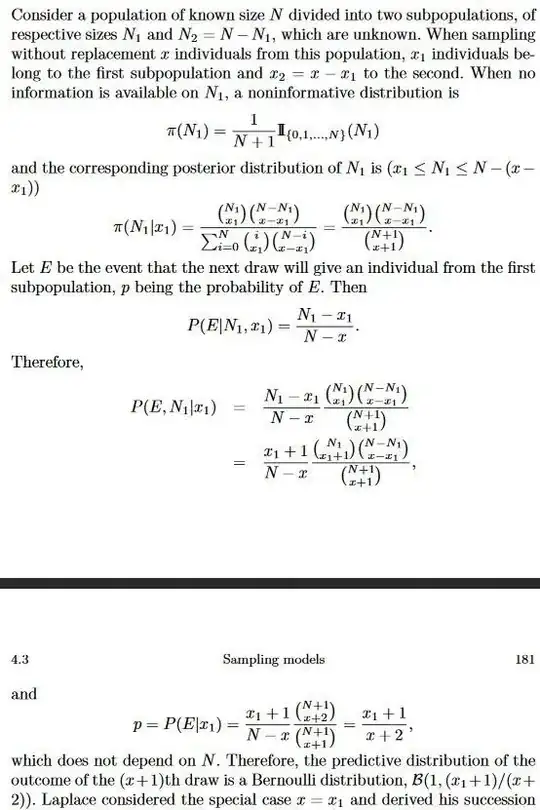Laplace's law of succession is a well-known rule, relying on Bayes' theorem.
A possible proof of the rule of succession can be found on Wikipedia. Note that for this proof we use a uniform distribution for the parameter $p$.
Another proof of the rule is given in The Bayesian Choice as reproduced below:
The problem is completely summarized in the image. This time, the prior we use is a uniform discrete probability distribution.
And we find both times the same final probability.
However, we did not used the uninformative prior each time. The uninformative prior for a discrete and finite set of possibilities is the uniform distribution. But the uninformative prior for the parameter $p$ in the first proof should be $1/[p(1-p)]$?
My problem is that if we use the uninformative prior in both cases (so this should only be two different formulations of the same problem ?), we find two different answers.
I am surely mistaken about the meaning of one approach, could you please give me some clue?
